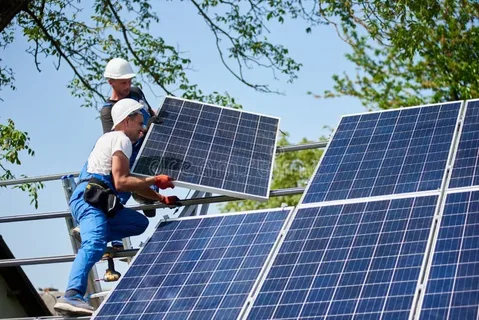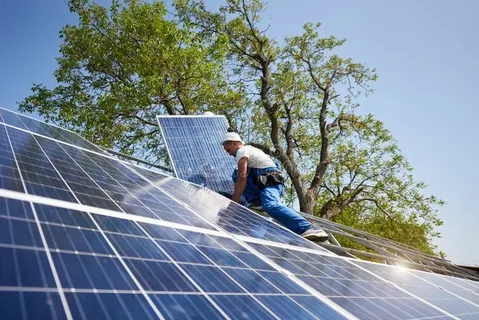Are you tired of relying on traditional power grids and dealing with costly electricity bills? It may be time to consider making the switch to stand alone power systems in Australia. Stand alone power, also known as off-grid power, is a self-sufficient energy system that operates independently from the main power grid. With the increasing demand for renewable energy and the rising cost of electricity, many Australians are turning to stand alone power as a more sustainable and cost-effective solution. In this blog, we will explore the benefits and considerations of stand alone power systems in Australia.
Understanding Stand Alone Power Systems Australia
Stand alone power systems Australia, also known as off-grid power systems, are becoming increasingly popular in Australia. These self-sufficient energy systems operate independently from the main power grid, providing a reliable and sustainable source of electricity.
In Australia, where the cost of electricity is rising and the demand for renewable energy is growing, many people are turning to stand alone power systems as a viable alternative. These systems utilize renewable energy sources, such as solar panels and wind turbines, to generate electricity. The excess energy is stored in batteries, which can be used during periods of low generation or high demand.
One of the key advantages of stand alone power systems in Australia is the ability to reduce or even eliminate electricity bills. By generating your own power, you can become self-sufficient and not rely on the fluctuating costs of electricity from the main grid. Additionally, stand alone power systems provide a more sustainable option, as they use renewable energy sources and reduce the carbon footprint.
It’s important to note that stand alone power systems require careful planning and design to meet the specific needs of your property. Factors such as energy consumption, location, and available renewable resources need to be considered when determining the size and capacity of the system.
Benefits of Making the Switch to Stand Alone Power Supply Systems
Making the switch to stand alone power supply systems in Australia offers numerous benefits for homeowners and businesses alike. One of the key advantages is the potential to reduce or even eliminate electricity bills. By generating your own power, you can become self-sufficient and not rely on the fluctuating costs of electricity from the main grid. This can lead to significant long-term savings and greater control over your energy expenses.
In addition to cost savings, stand alone power supply systems are also a more sustainable option. These systems utilize renewable energy sources, such as solar panels and wind turbines, to generate electricity. By harnessing the power of the sun and wind, you can significantly reduce your carbon footprint and contribute to a cleaner environment. This is especially important as the demand for renewable energy continues to grow and the need to combat climate change becomes more urgent.
Another benefit of stand alone power supply systems is their reliability. Traditional power grids are susceptible to outages and blackouts, especially during extreme weather events. With a stand alone power system, you can have peace of mind knowing that you have a reliable source of electricity even during power disruptions. This can be particularly beneficial for those living in remote areas where power outages are more common.
Furthermore, stand alone power supply systems provide energy independence. You are no longer dependent on the main power grid and its limitations. You have the freedom to generate your own power and use it as needed, without worrying about external factors. This independence can give you greater control over your energy usage and the ability to adapt to changing circumstances.
Key Components of Stand Alone Power Systems: A Closer Look at Batteries
When it comes to stand alone power systems in Australia, one of the key components that requires closer examination is the battery. Batteries play a crucial role in storing and supplying the generated energy for use when there is low generation or high demand. They are essentially the heart of the stand alone power system.
The batteries used in stand alone power systems are specifically designed to handle the unique requirements of off-grid living. They are typically deep cycle batteries, which mean they can be discharged and recharged numerous times without losing their capacity. Deep cycle batteries are designed to provide a steady and reliable source of power, making them ideal for stand alone power systems.
The size and capacity of the battery bank will depend on several factors, such as the energy consumption of the property and the available renewable resources. It’s important to carefully consider these factors to ensure that the battery bank is sufficient to meet your energy needs.
Additionally, the type of battery used is an important consideration. There are various types of batteries available, including lead-acid, lithium-ion, and flow batteries. Each type has its own advantages and disadvantages in terms of performance, cost, and lifespan. It’s essential to do thorough research and consult with professionals to determine the best type of battery for your specific requirements.
Proper installation and maintenance of the batteries are also crucial for optimal performance. This includes ensuring the batteries are properly connected, monitoring their state of charge, and conducting regular inspections to identify any potential issues.
Installation and Maintenance of Stand Alone Power System Batteries
When it comes to stand alone power systems in Australia, one of the key components that requires careful attention is the batteries. These stand alone power system batteries are the heart of the system, storing and supplying the generated energy when needed. Proper installation and maintenance of these batteries are crucial for optimal performance and longevity.
During the installation process, it is essential to ensure that the batteries are properly connected and integrated into the system. This includes following manufacturer guidelines and recommendations to ensure the correct wiring and connections are made. Additionally, monitoring the state of charge of the batteries is vital to prevent overcharging or undercharging, which can negatively impact their lifespan.
Regular inspections and maintenance of the batteries are also important. This includes checking for any signs of wear or damage, such as corrosion or leakage, and addressing any issues promptly. It is also important to keep the battery area clean and free from dust or debris, as this can affect the battery’s performance.
Educating yourself on how stand alone power system batteries work and troubleshooting any potential issues is crucial for their optimal functioning. Understanding the different types of batteries available, such as lead-acid, lithium-ion, or flow batteries, and their specific maintenance requirements can help ensure their longevity.
Steps for Transitioning to Stand Alone Power Systems
Transitioning to stand alone power systems in Australia may seem like a daunting task, but with the right steps, it can be a smooth and successful process. Here are some key steps to consider when making the switch to stand alone power:
- Assess your energy needs: Start by evaluating your current energy consumption and determining how much power you require on a daily basis. This will help you determine the size and capacity of your stand alone power system.
- Research renewable energy sources: Look into the renewable energy sources available in your area, such as solar power or wind turbines. Determine which sources are most suitable for your property and climate.
- Consult with professionals: Reach out to experts in stand alone power systems to get advice and guidance. They can help you assess your property, determine the best system for your needs, and provide recommendations for installation and maintenance.
- Plan your system design: Work with professionals to design a stand alone power system that meets your energy needs. This includes determining the number of solar panels or wind turbines required, as well as the size and capacity of your battery bank.
- Install your system: Once you have your design in place, it’s time to install your stand alone power system. This may involve installing solar panels on your roof, setting up wind turbines, and connecting your battery bank.
- Monitor and maintain your system: Regularly monitor your stand alone power system to ensure it is functioning optimally. This includes checking the state of charge of your batteries, inspecting for any signs of wear or damage, and conducting routine maintenance as recommended by the manufacturer.
Challenges and Solutions When Switching to Stand Alone Power Supply Systems
Switching to stand alone power supply systems in Australia can come with its own set of challenges. However, with careful planning and the right solutions, these challenges can be overcome, and the transition can be a successful one.
One of the main challenges is determining the size and capacity of your stand alone power system. Assessing your energy needs accurately is crucial to ensure that your system can meet your electricity requirements. Consulting with professionals in stand alone power systems can provide valuable guidance and help you design a system that suits your needs.
Another challenge is the initial cost of installing a stand alone power system. While the long-term savings can be significant, the upfront investment may be daunting. However, there are various financial incentives and government rebates available to help offset these costs. Researching and exploring these options can make the switch more affordable.
Maintenance and monitoring can also be a challenge for stand alone power systems. Regularly inspecting the system, checking battery levels, and conducting routine maintenance is essential for optimal performance. It’s important to educate yourself on how the system works and troubleshoot any potential issues.
Lastly, weather conditions can pose challenges for renewable energy sources. Days with little sun or wind may result in reduced power generation. However, designing your system to have enough capacity and integrating multiple renewable energy sources can help mitigate this issue.
Designing Your Stand Alone Power System to Meet Your Needs
Designing your stand alone power system is a crucial step in transitioning to sustainable and self-sufficient energy. By carefully considering your energy needs and available resources, you can create a system that meets your specific requirements.
First, assess your energy needs by evaluating your current electricity consumption. Determine how much power you use on a daily basis and identify any high-demand periods. This information will help you determine the size and capacity of your stand alone power system.
Next, research the renewable energy sources available in your area, such as solar power or wind turbines. Consider the climate and conditions of your property to determine which sources are most suitable. It’s important to choose reliable and efficient technologies that will generate enough power to meet your needs.
Consulting with professionals in stand alone power systems is highly recommended. They can provide expert guidance and help you design a system that maximizes your energy generation. They will consider factors such as the number of solar panels or wind turbines needed, as well as the size and capacity of your battery bank.
Consider integrating multiple renewable energy sources to ensure consistent power generation. This can help mitigate challenges posed by weather conditions and fluctuations in energy generation. By diversifying your energy sources, you can enhance the reliability and sustainability of your system.
Conclusion
In this blog post, we have explored the benefits and considerations of making the switch to stand alone power systems in Australia. Stand alone power, also known as off-grid power, offers numerous advantages for homeowners and businesses alike. By generating your own power, you can reduce or even eliminate electricity bills, providing significant long-term savings and greater control over your energy expenses. Additionally, stand alone power systems are a more sustainable option, utilizing renewable energy sources and reducing your carbon footprint.
One of the key components of stand alone power systems is the battery. These deep cycle batteries play a crucial role in storing and supplying the generated energy, ensuring a reliable and steady source of power. Proper installation and maintenance of the batteries are essential for optimal performance and longevity.



